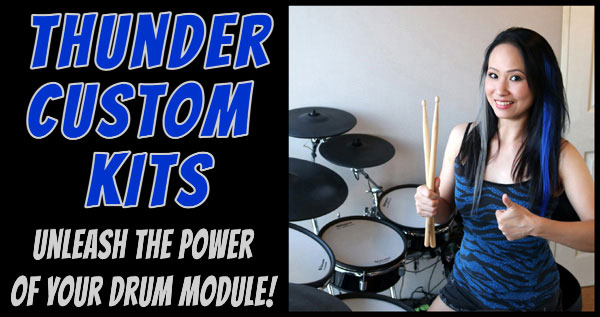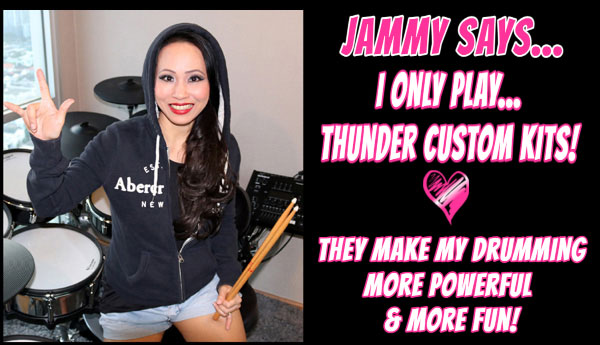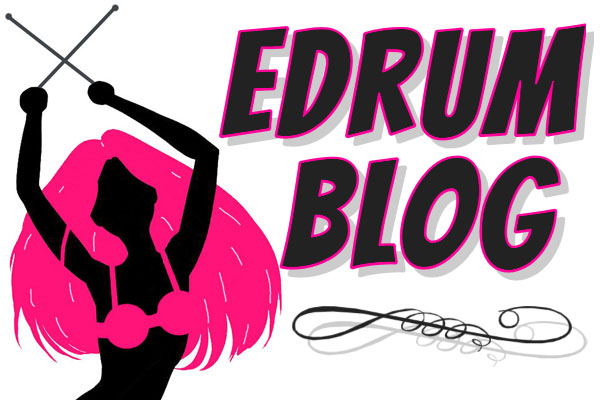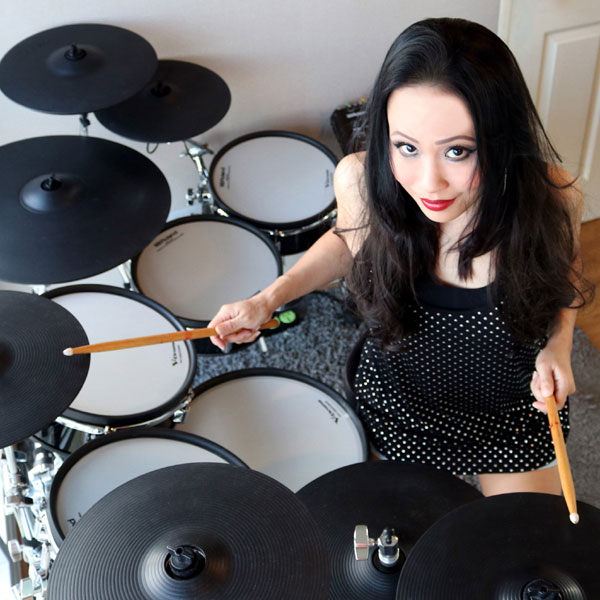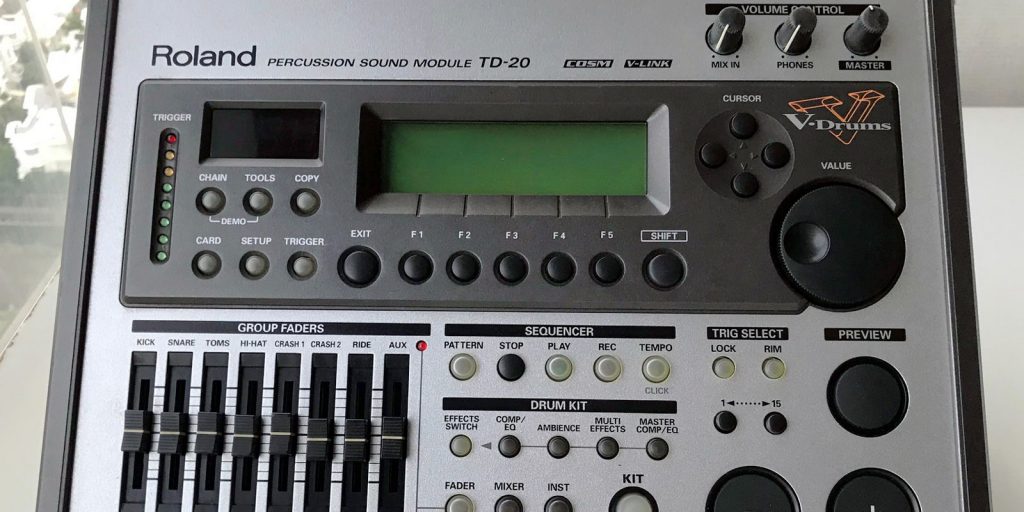
Do you know how to create the very best electronic drum trigger settings to make your kit play the way you want it to? It amazes me how few drummers change anything at all on their trigger settings, yet love to complain about all the playability issues they might experience on their kits! Lol…
Fortunately, there are many settings that can be easily changed to improve your set’s playability, with no consequences at all for trying out different things. Many new edrummers are so frightened that they are going to “mess something up”, but all triggers settings can be reset to default with a simple turn of a dial or press of a button, so don’t worry!
Electronic drum manufacturers have to create default settings that will work well for most drummers and most scenarios. These settings are usually fine, but not perfect. Let’s explore some circumstances that might warrant some changes to your edrum trigger settings.
Drum Trigger Settings: Sensitivity
I find the sensitivity for most electronic drums to be far too low for the average player. The manufacturer’s idea is to create the widest dynamic range, so if the payer wants to get the hardest hit registering on the module, they will have to actually hit the drum really hard. While this is great in theory, the vast majority of drummers who use electronic drums do not play overly dynamic styles of music. They tend to play rock and pop or even metal, which usually have far less dynamic range than say jazz.
Furthermore, most electronic drummers specifically buy edrums to keep their playing quiet. Why would they want to have to hit the drums so hard in order to get a full sounding set of samples from the module? It makes little sense. Hitting harder will increase the acoustic sound of the drums and disturb more people. It will also take a toll on your gear over time.
It is better to increase the sensitivity a small to moderate amount and be able to hit lighter and still get the practical dynamic range necessary to make your drums sound full and great. You will lose very little in terms of dynamics, but will be able to access the highest velocity samples in the module more often for a fuller sound playing harder styles of music.
Better still, you will not have to put so much stress on your gear by hitting it so hard! These are edrums… They do not need to be hit hard to create a full sound like acoustic drums. Learn this and you will be able to play quieter, faster, with more finesse and your gear will last longer.
I tend to encourage users to increase their trigger sensitivity across most Roland pads by 1 to 2 full points from the default setting. If the user is playing a KT10 kit pedal, I recommend increasing the sensitivity quite a bit more, up to 4 to 8 points on some modules for best playability. Finally, if the user is playing newer style Roland pads, such as the VAD styles kits or any kits with the new 3 trigger cone design (PDA series), then the trigger settings might benefit from increases of 2 to 4 full points above default.
Electronic Drum Threshold
Threshold is typically set quite low. I find most default settings close to being optimal. Many triggers are set by default between 2 to 4. I tend to reduce this setting to 1 to improve registering the softest hits. As long as you are using proper mountings for your drums, this should never create mistriggering. Roland kick drum threshold often starts around 6. I find this to be way too high and prevents the kick from registering many softer hits. I reduce it to 1 and once again, have never had any mistriggering issues across many different modules and triggers.
Drum Trigger Settings: Rim Gain
Rim gain is the amount of extra gain (volume) applied when hitting the rim of the drum or the edge zone on a cymbal pad. Rim gain can be used to balance extra sounds that you might assign to the rim of drums, but the default settings are usually fine for this. Where I find rim gain to fail in the stock settings is for cymbal pads!
Real cymbals are much louder and more explosive if you hit them on the edge than if you tap them on the bow. Any drummer knows this. If you are striking a crash for an explosive sound, you hit the edge… Almost every edrum cymbal pad is made with the reverse dynamic occurring by default. The rim will be lower in volume than the bow, making the tap on the top of the cymbal louder and more pronounced than a full strike on the edge. This has always baffled me!
I systematically adjust and recommend to all of my customers to adjust the rim of every cymbal to be 1.0 to 1.1. It should never be at 0.7 or 0.8 for an accurate playing experience! Want the easiest fix to get your cymbals playing more naturally, with the volume you would expect from specific types of hits? Change the rim gain…
Rim Adjustment
Some triggers have changed in their design over time and tend to encourage false triggering due to interactions with different generations of modules. This is commonly seen now on various styles of PDX-8 pads when combined with newer modules like the TD-17. I have played many kits where toms would trigger the rim when the head was struck, because the settings of the module were designed for a different set of PDX-8 pads than was currently being used. I also sometimes see this when the snare triggers the rim when the head is struck. These are common problems for some edrums.
Most users will believe that the pad is broken and will take it to be fixed. In some cases, the repair facility will indeed change a sensor and charge the owner for an unneeded repair. The fix is easy and works perfectly! You can do it right now.
Simply increase the rim adjustment. Most default settings are low, 15 to 30 on most triggers. I find increasing this number to 60 or 70 fully solves the head mistriggering the rim, but still allows perfect playability when you do actually hit the rim to trigger it. This is one of the easiest fixes for triggering issues and is widely unknown.
There are many advanced settings that can be used for different purposes and for trouble shooting various issues. The basic ones I have covered are the most important and universal, while other issues tend to happen due to poor consumer choices (using crap pads, modules racks or mounting hardware!) and due to poorly executed DIY efforts, like on acoustic conversions with a mixture of aftermarket trigger systems. Most of the other settings on your traditional pad-based edrum set do not have to be used for the average owner, but can be extremely valuable in select circumstances.
Best of luck and I hope this post helps you to optimize your edrumming experience!

